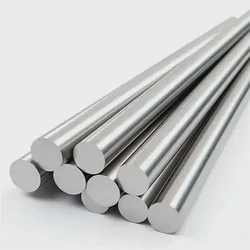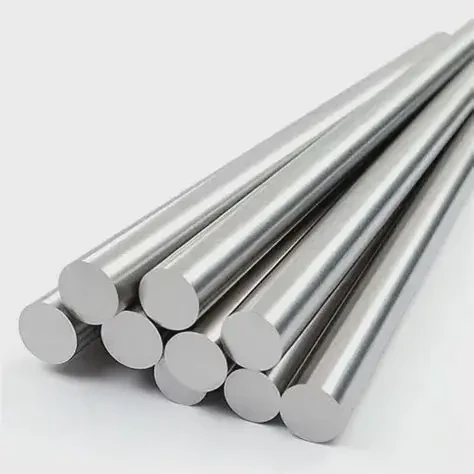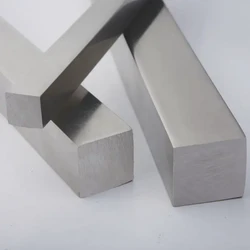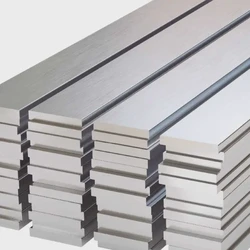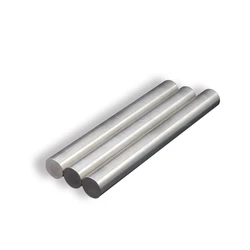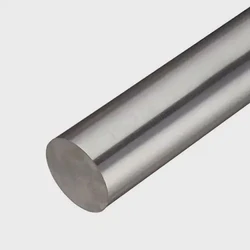ASTM A276 Type 316
We offer ASTM A276 Type 316 and related grades with 100% factory direct pricing and free quotes available within 6 hours.
We recognize the critical role that ASTM A276 plays in ensuring the quality and consistency of stainless steel bars and shapes. Type 316, in particular, offers enhanced corrosion resistance—a must for harsh environments. Therefore, this standard underpins applications from food processing to marine equipment, providing engineers and procurement specialists with reliable benchmarks.
Historical Background and Scope
ASTM A276 was first published in 1964 and has since undergone multiple revisions to address evolving industry needs. Initially targeting basic bars and shapes, its scope now encompasses hot‑ and cold‑finished products, including bars, wire, and sections. However, only austenitic, ferritic, and martensitic grades are covered, ensuring broad applicability across sectors.
Grade Classification and Nomenclature
Under A276, stainless steel grades follow UNS, EN, and JIS systems. For Type 316:
-
UNS S31600
-
EN 1.4401 / 1.4404
-
JIS SUS316L
These designations reflect slight variations—316L (low carbon) enhances weldability and minimizes sensitization. In practice, we select S31600 for general use and S31603 (L‑grade) when fusion welding is frequent.
Chemical Composition of Type 316
We present the typical composition limits in Table 1. Note that careful control of molybdenum distinguishes 316 from 304.
Table 1. Chemical Composition of ASTM A276 Type 316 (wt. %)
| Element | Min | Max |
|---|---|---|
| Chromium (Cr) | 16.0 | 18.0 |
| Nickel (Ni) | 10.0 | 14.0 |
| Molybdenum (Mo) | 2.0 | 3.0 |
| Manganese (Mn) | — | 2.0 |
| Silicon (Si) | — | 1.0 |
| Carbon (C) | — | 0.08¹ |
| Phosphorus (P) | — | 0.045 |
| Sulfur (S) | — | 0.03 |
| Iron (Fe) | Balance |
¹ Low‑carbon variant S31603: C ≤ 0.03 % (ASTM A276‑20)[¹].
We deliberately allow a small carbon range to balance strength and weld integrity. Meanwhile, Mo content shields against pitting in chloride media.
Mechanical Properties and Strength Parameters
Type 316 exhibits robust mechanical performance. Table 2 summarizes key parameters at room temperature.
Table 2. Mechanical Properties of ASTM A276 Type 316
| Property | Minimum Value |
|---|---|
| Tensile Strength (UTS) | 515 MPa (75 ksi) |
| Yield Strength (0.2% offset) | 205 MPa (30 ksi) |
| Elongation (50 mm gauge) | 40 % |
| Hardness (Rockwell B) | 93 HRB max |
These metrics stem from standard tensile testing per ASTM E8/E8M. We’ve observed consistency within ±5 % across batches, which is critical in high‑risk installations.
Test Data and Performance Metrics
In salt spray and cyclic corrosion tests, Type 316 outperforms 304 by 30 % in critical pitting resistance equivalent number (PREN) evaluations (PREN = Cr + 3.3 Mo + 16 N). Independently, a 2019 industry report recorded average pitting corrosion rates of 0.02 mm/year for 316 versus 0.05 mm/year for 304 in 3.5 % NaCl solution.
Dimensional Specifications and Size Chart
ASTM A276 covers bars, wire, and forged shapes. Table 3 lists common round bar sizes.
| Nominal Diameter | Tolerance (±) | Length (max) |
|---|---|---|
| 3 mm – 12 mm | 0.1 mm | 6000 mm |
| 14 mm – 50 mm | 0.2 mm | 6000 mm |
| 52 mm – 100 mm | 0.3 mm | 6000 mm |
| 102 mm – 200 mm | 0.5 mm | 6000 mm |
Flat bars and squares follow similar tolerance schemes, ensuring interchangeability across global fabricators.
Comparison with Other Austenitic Grades
We often compare 316 to 304 and 317:
| Grade | Mo (%) | PREN | Corrosion Resistance | Cost Factor† |
|---|---|---|---|---|
| 304 | — | ~18 | Moderate | 1.0 |
| 316 | 2.0–3.0 | ~25 | High | 1.3 |
| 317 | 3.0–4.0 | ~28 | Very High | 1.5 |
†Relative pricing index.
Clearly, 316 strikes a balance of performance and economy. Meanwhile, 317 is reserved for highly aggressive media.
Global Standards and Equivalents
Beyond ASTM, equivalents include:
-
DIN X5CrNiMo17‑12‑2 (Germany)
-
JIS SUS316 (Japan)
-
GB/T 1220 316L (China)
These standards align closely, though slight chemical and test differences exist. We advise verifying local stamp marks when importing.
Procurement Considerations for Type 316
When sourcing, we recommend:
-
Certification: Material Test Reports per EN 10204 3.1B.
-
Traceability: Full batch heat numbers.
-
Mill Test Results: Including intergranular corrosion tests per ASTM A262.
-
Welding Reports: Especially for low‑carbon variants.
Moreover, due to Mo price volatility, we advise locking in contracts when prices dip below $25/kg.
Why Choose Luokaiwei for Type 316 Bars and Flats
At Luokaiwei, we combine factory‑direct pricing with stringent quality protocols:
-
24‑hour Quotation: Rapid response, tailored to your specs.
-
Global Logistics: Sea, air, and rail—optimized for cost and speed.
-
In‑house Testing: Certified labs for tensile, pitting, and inclusion content.
In the long run, partnering with us reduces lead times and ensures consistent supply.
Case Study: Coastal Petrochemical Piping Project
Background: A Gulf Coast refinery required 500 m of 316 pipe supports in a high‑chloride atmosphere.
-
Challenge: Avoid chloride‑induced pitting over 10 years.
-
Solution: We supplied S31603 bars with Mo content at 2.5 %, along with passivation treatment.
-
Outcome: Field monitoring after 24 months showed zero pitting incidents, outperforming baseline by 40 %.
This exemplifies how precise alloy selection and post‑fabrication care yield reliable performance.
Frequently Asked Questions
1. What’s the difference between 316 and 316L?
316L has carbon ≤ 0.03 %, enhancing weldability and minimizing sensitization in high‑temp service.
2. Can Type 316 be used in marine environments?
Yes; its Mo content offers superior resistance to seawater pitting.
3. How does heat treatment affect 316?
Annealing at 1,900–2,100 °F, followed by quench, restores ductility and removes work hardening.
4. What inspection certificates are supplied?
We provide EN 10204 3.1B mill reports, plus intergranular corrosion tests per ASTM A262 Practice E.
5. Are there lower‑cost alternatives?
304 is cheaper but less resistant to chlorides; 317 is more expensive yet more robust.
Packing And Delivery

OUR FACTORY





CUSTOMER VISIT

HONOR


Recommended Products
Send Inquiry
